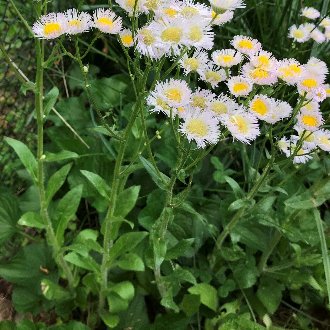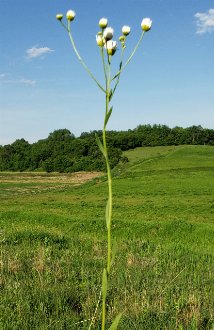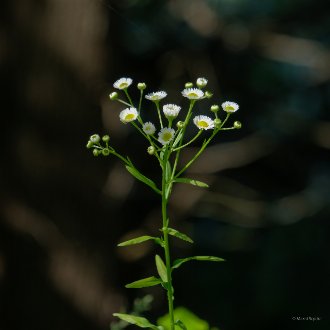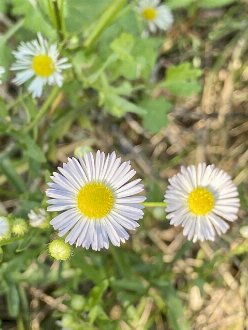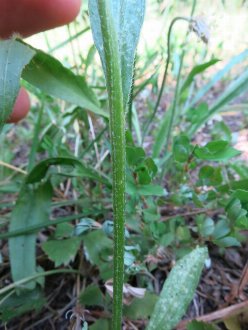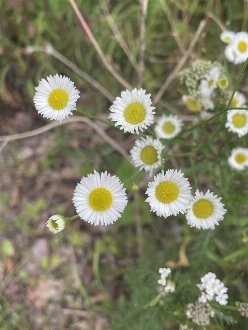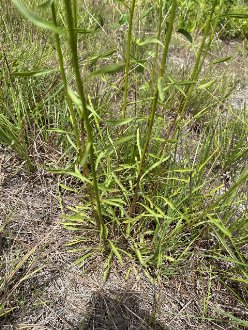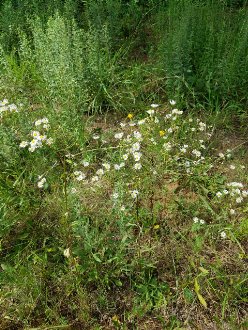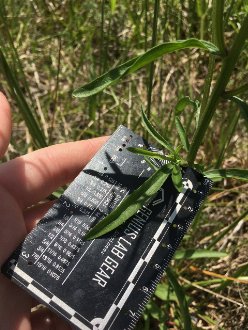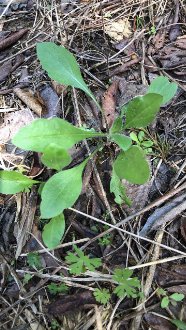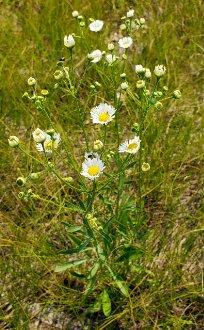Prairie Fleabane (Erigeron strigosus Muhl. ex Willd.)
Also known as daisy fleabane, rough fleabane (var. strigosus only), common eastern fleabane.
↑Summary
A common annual or biennial of sunny sites, native to much of North America, particularly abundant in the Great Plains.
↑Range - Expand
| Legend | Color |
| Native | |
| Expanded | |
| Native or Not Present | |
| Native or Expanded | |
| Expanded or Not Present | |
| Native or Expanded or Not Present |
This tentative map is based on our own research. It may have limited data on Canada and/or Mexico, and there is some subjectivity in our assignment of plants as introduced vs. expanded. Read more in this blog post.
Although this plant occurs somewhere in each of these regions, it may only occur in a small part of some or all of them.
We marked this species as Expanded in the western portion of its range, where it is not native, because it is a weedy species that seems to spread on its own. The northern portion of its range expansion is more contiguous with its range, whereas in the south, it is found in more isolated pockets, but the overall pattern is one of expansion.
↑Description & Identification
Unlike some Erigeron sp., the leaves do not clasp the base, and leaves tend to be sparser.
↑Similar Plants
↑Habitat
Found in a variety of sunny habitats, including prairies, limestone glades, savannas, and various anthropogenic habitats including pastures, abandoned fields, and along roadsides and railroads.
Prefers full sun, mesic to dry conditions, and high pH soil containing clay and/or gravel. Often found on sites that have experienced some recent disturbance. It can occur temporarily in richer, loamy soil, following disturbance, whereas it persists longer on harsher sites.
↑Life Cycle
This species is usually an annual or biennial, occasionally growing as a short-lived perennial.
↑Notes
We prefer the common name "Prarie Fleabane" both it is unambiguous, and descriptive, in that this species ranges farther into the great plains, a prairie-dominated ecoregion, than other Erigeron species, and is the native Erigeron species best-adapted to and most dominant in mesic to dry prairies, although E. philadelphicus is more dominant in wet prairies.
The other common names for this species are particularly problematic: "daisy fleabane" also refers to annual fleabane (Erigeron annuus), which may reflect the visual similarity of these two species' flowers, and the difficulty of telling the species apart. Although the name "common eastern fleabane" is unambiguous, having only been used to refer to this species, it is misleading as this species ranges farther west than the other three eastern fleabane species, and two of those species, E. annuus and E. philadelphicus are also common and, being more shade-tolerant, are often locally more common in the humid, forest-dominated portions of the east.
↑Links & External Resources
• Erigeron strigosus (Daisy Fleabane) | Illinois Wildflowers (About This Site)
• Erigeron strigosus (Daisy Fleabane) | USDA PLANTS Database (About This Site)
• Erigeron strigosus | Go Botany (About This Site)
• Erigeron strigosus | Biota of North America Project (BONAP) (About This Site)
• Erigeron strigosus | NatureServe Explorer (About This Site)
• Erigeron strigosus | Flora of North America (About This Site)
• Erigeron strigosus | Missouri Plants (About This Site)
• Prairie Fleabane | Maryland Biodiversity Project (About This Site)
• Erigeron strigosus (Prairie Fleabane) | Minnesota Wildflowers (About This Site)
• Erigeron strigosus Muhl. ex Willd. var. strigosus (Daisy Fleabane) | Digital Atlas of the Virginia Flora (About This Site)





